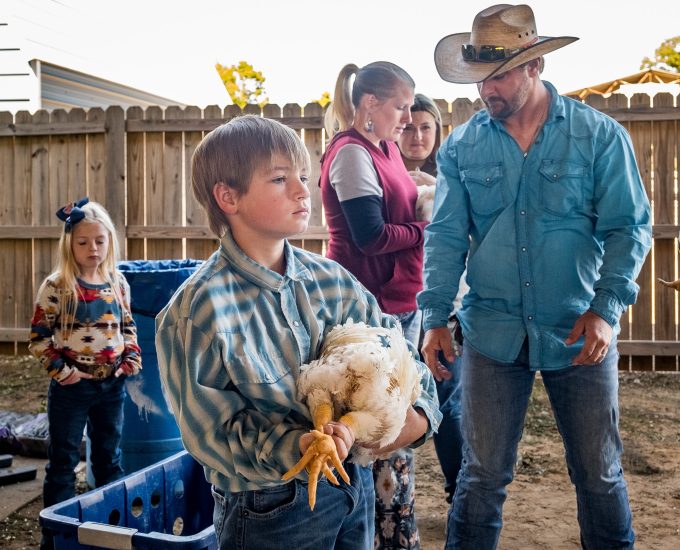East Texas youth show fruits of hard work at Harvest Festival in Longview
Published 10:40 pm Wednesday, October 22, 2025
You can’t be a chicken if you want to raise fowl. It’s a tough job.
Students wake up early in the morning to feed and water their flock, go to school and come home to spend more time raising their critters. They spend countless hours, expend great effort and invest their hearts into being caretakers.
“They learn dedication. They learn responsibility. They learn financial management,” said Shaniqua Davis, the Gregg County Extension agent.
For 51 years, the annual Harvest Festival and Livestock show at the Longview Fairgrounds has given those students a chance to showcase their hard work and dedication each October.
The annual festival and livestock show feature the fruits of the labor of students from Gregg, Smith, Rusk, Upshur and Harrison counties. They display animals they’ve raised, mechanical objects they’ve built, photos they’ve taken, food they’ve cooked and more. The exhibition might be short, but all the preparation takes students a long time.
The show lasts through Saturday, and various competitions take place each day.
On Wednesday, it was time for chickens to be judged.
Seventh-grade Kilgore ISD student Levi Davis and her father, Cole, carefully tended to three chickens as fellow agricultural students lined up inside the ag pavilion.
The chicken show is a market show, meaning a judge assesses the qualities that make a chicken good for eating – namely the quality of the breast. Students raising chickens must enter three chickens in the competition, and they should have uniform bodies, Davis said.
Levi Davis said she’s been raising her full-grown chickens since they were mere chicks. Students must own their animals for a certain amount of time before they can enter the show. That ensures that they’ve been the ones caring for them.
Students don’t do that work alone, however. They need at least a couple of extra hands on the day of the show, when students must hold their chickens upside down by their legs to be judged. And most, if not all, have a lot of help in the weeks and months of raising their animals.
As Cole Davis said with a smile, raising animals is “a full-blown family affair.”
Griff Antunes, a senior at Henderson High School, donned a western shirt and jeans as he stood beside his father, Gary, and the son of his agriculture teacher, 9-year-old Jaxon Brown, in the arena. Each held one of Griff’s chickens.
Griff has been showing chickens since he was in seventh grade. The part he enjoys about raising chickens is “making the sale and getting some money,” he said.
He wakes up around 6:30 a.m. daily to feed his flock, and he tends to them periodically throughout the day between classes.
The most surprising part of raising chickens is how quickly they grow, he said.
“That’s definitely the craziest thing,” he said. “Say you’re away for a week. You got your parents taking care of them, and you come back, and they’re twice as big.”
Shaniqua Davis said raising an animal takes time and dedication. It also teaches students – agricultural or not – some important lessons about the food chain: “It shows you where your food actually comes from.”
Not so long ago, many American families were involved directly in farming and ranching. Not so anymore, and many students are several generations removed from any relative who did, Davis said. If someone asks a student where his or her hamburger comes from, he or she might answer: “McDonald’s” or “the grocery store.”
“What they don’t understand is that it actually comes from a living animal,” she said. “You have to learn how to properly handle those animals for husbandry, for stewardship, to be able to advocate for agriculture. You’re showing the consumer, somebody that doesn’t know anything about agriculture, ‘This is where your food comes from.’”
To view the full schedule for the show, visit harvestfestivallivestockshow.com.

